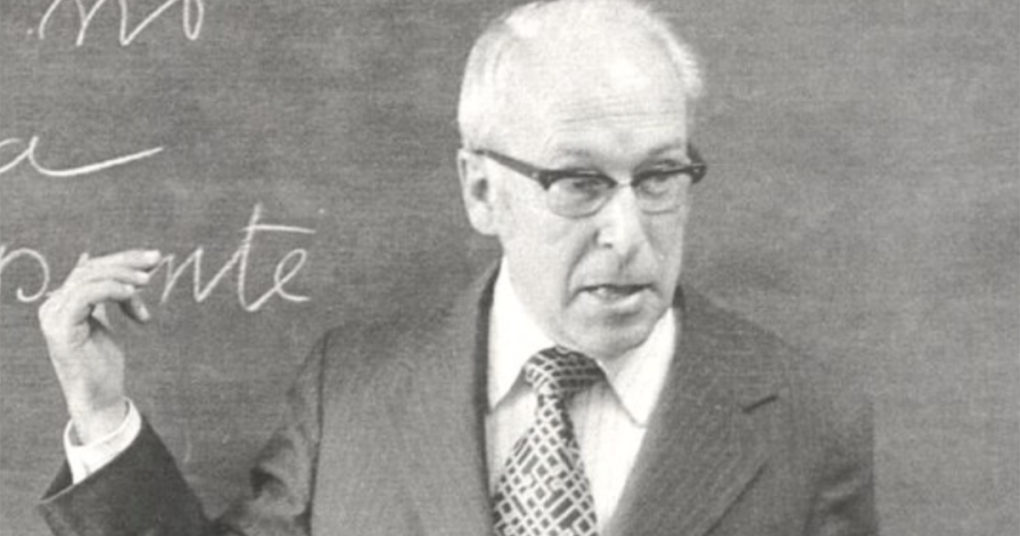No Small Goals: The Life of Dr. Ernesto Cofiño, Guatemalan Physician, Humanitarian, Pioneer in Pediatric Medicine and Servant of God
Thomas A. McDonough
Scepter Publishers, 2020.
I never knew much about Guatemala, except that it was one of six Spanish speaking countries in Central America and that it had endured decades of civil war and poverty in common with its neighbours despite (or possibly because of) its being in Uncle Sam’s back yard. This book shows how one man can make a huge difference to the society he lives in – one can say that the life of Dr Ernesto Cofiño (1899-1991) is proof positive that God continues to raise up men and women outstanding in goodness in all sorts of places.
Ernesto came from a comfortable background – his father had great entrepreneurial skills, but was stern and not easy to live with. His mother helped nurture his deep Catholic faith despite a school system implacably hostile to Catholicism. Ernesto graduated from high school in 1917 and hoped to study medicine in the University of Guatemala, but such hopes were dashed when a series of earthquakes all but destroyed the capital, Guatemala City, including the University buildings.
In 1919, an opportunity arose for Ernesto to study at the Sorbonne in Paris. The book describes his long journey by land and sea to Paris and the loneliness he felt there, but also the fantastic opportunity for a young man to savour the grandeur of one of the world’s great cities. After several years of hard work and overcoming some extremely difficult challenges he finally qualified in early 1927 and began an internship – the first foreign intern in Paris hospitals. He practised medicine at the Hôpital des Enfants Malades with the top figures in French pediatrics. In less than three years as an intern, he co-authored five research papers with internationally renowned scientists on perionitis, pneumonia and tuberculosis as they refer to children.
He might have had a stellar career in Paris if he had chosen to stay there, but he returned home and helped build up the health system in his native country. He was particularly anxious to serve the poor including the indigenous Maya. The book chronicles his career in pediatrics, his deepening faith and his deep commitment to life. Guatemala is one of the few Western countries that protects life from conception, despite campaigns from heavily funded international organisations whose efforts particularly targeted the Mayan population seeking to reduce their numbers.
Ernesto was a pioneer in pediatric research in Guatemala, and created the chair of Pediatrics in the Medical Faculty at the University of San Carlos, where he was professor for twenty-four years.
The first members of Opus Dei arrived in Guatemala in 1953. Soon afterwards, Ernesto met a priest of Opus Dei, and felt that its spirit suited him down to the ground. Though already well into his fifties at that stage, he threw himself heart and soul into its activities, in particular to the promotion of Ciudad Vieja University Residence in Guatemala City. By encouraging people to support it financially, he made it possible for a large number of students who couldn’t otherwise afford it to come to the capital to study.
Retirement apparently wasn’t a word in Ernesto’s vocabulary. As long as he could he worked in the field of medicine and helping the development of Ciudad Vieja and other social projects. He intensified his apostolate and sought to communicate his joy and generosity to many other people. He encouraged them to help promote Christian social projects, with their prayer and financial support, and put many hours into those projects himself, determined to make the Church’s social teaching a reality.
He was heroic in helping organize training and educational programs for women from very poor backgrounds and other works of charitable assistance, continuing this work right up to his ninety-second year.
Long since widowed, he lived into his nineties, suffering a painful illness which he bore with great courage and serenity. He died in 1991 and the cause for his canonisation was opened in 2000.
I strongly recommend this book – it’s easy to read and enlightening in its contents.
About the Author: Pat Hanratty
Pat Hanratty taught Science/Chemistry in Tallaght Community School from its inception in 1972 until he retired in 2010. He was the school’s first Transition Year Co-ordinator and for four years he had the role of home School Community Liaison Officer.

